The 12th November is St Martin’s Day, also known as ‘Martinmas’, and is traditionally the date that marked the first slaughter of pigs. This was partly because it’s now cold enough for flies not to be a problem, and for it to be easier to store the meat, but also to get food for the feasting season.
Along with Joe, Rachael, Jenny and Anne, I’ve come to Tom and Victoria’s farm by the coast in Exeter.
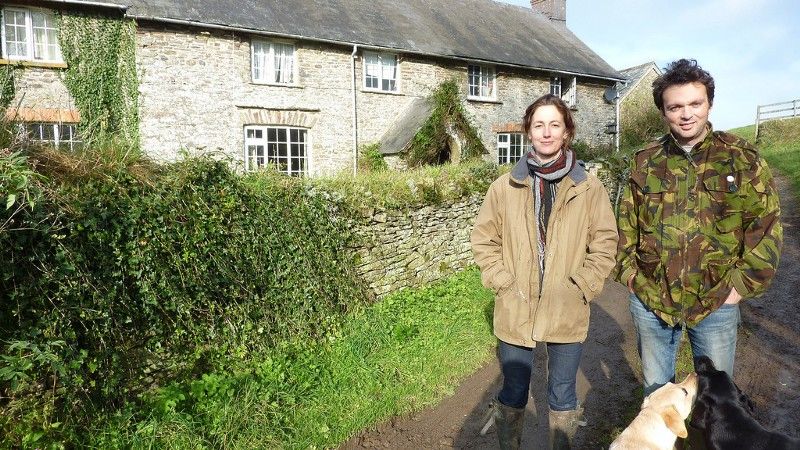
Tom and Victoria run The Idler magazine and shop, and as part of their idler philosophy are keen fans of a traditional and natural approach to food.
We’re going to mark Martinmas by spending the weekend processing a pig, with help from John Mitchinson (a keen pig smallholder, as well as founder of the innovative publisher Unbound), Richard Holland (known by everyone as ‘Duchy’, an expert slaughterman and butcher)… and a well cared for Gloucester Old Spot pig.
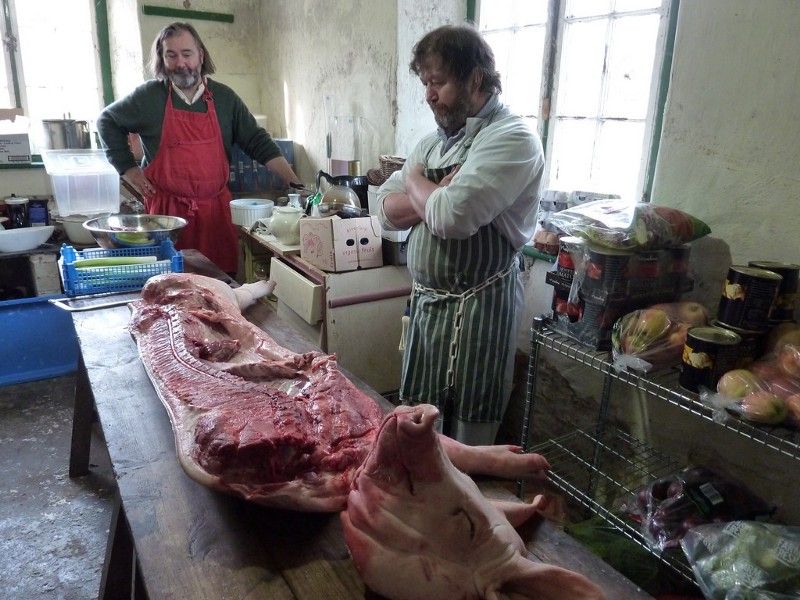
The pig was killed yesterday at an official slaughterhouse, delivered here last night, and hung. It’s been sawn in two down the spine, and we’re going to turn half into bacon and ham, and the other half into pork joints.
Rearing Pigs
Over the weekend there were various discussions about people’s attempts or enquiries into keeping pigs. The advice seemed to be you had to keep at least two as they are social creatures and one won’t be happy on it’s own. They’ll eat anything in the field you put them in, so are great for preparing land for planting, as they even dig down to eat the roots of weeds. You’ll also need to feed them on pig nuts. This is not some dodgy offcuts from dead pigs(!), but is a special pelleted feed designed for pigs. You can also feed them apples and other crops you have access to large quantities of, but you shouldn’t feed them kitchen scraps. You start by buying a weener for about £30. You can then expect to spend £120 on food over their life. It’s very rare that pigs will need attention from a vet. John says he’s needed to get a vet once in years of keeping about 80 pigs in total. Slaughter costs £20.
Brawn
So, now to making the most of the pig. First we cut up the head, remove the brains and set aside, and place the pieces of the head in a pot with one trotter (split open), some onions and some herbs. This will then be topped up with water and boiled to become ‘Brawn’.
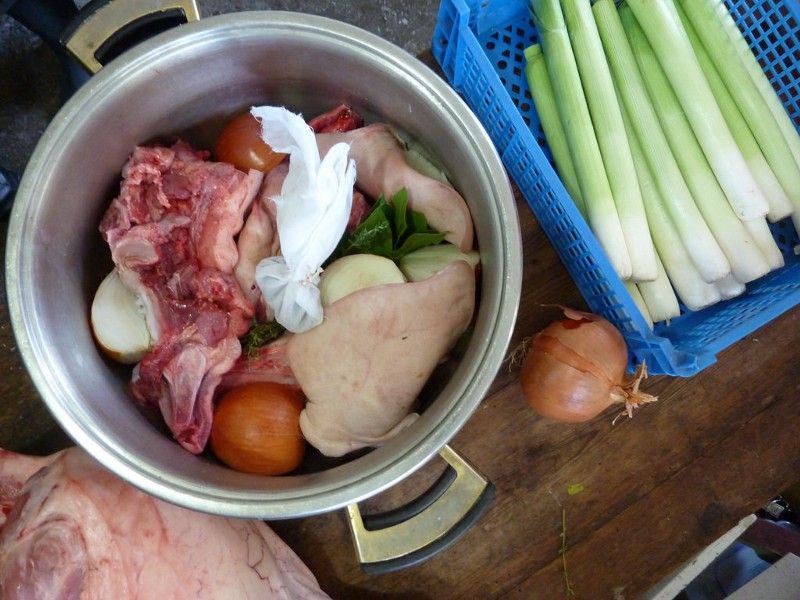
Once this has boiled for a few hours the bits of meat and jelly will fall away. Pick these out of the pan and put in a dish. Boil down the juice until it’s reduced by two thirds and add lemon zest, the juice of a lemon, chopped parsley, salt and pepper. Pour this into the dish, and then cover and place some weight on top to compress it as it sets.
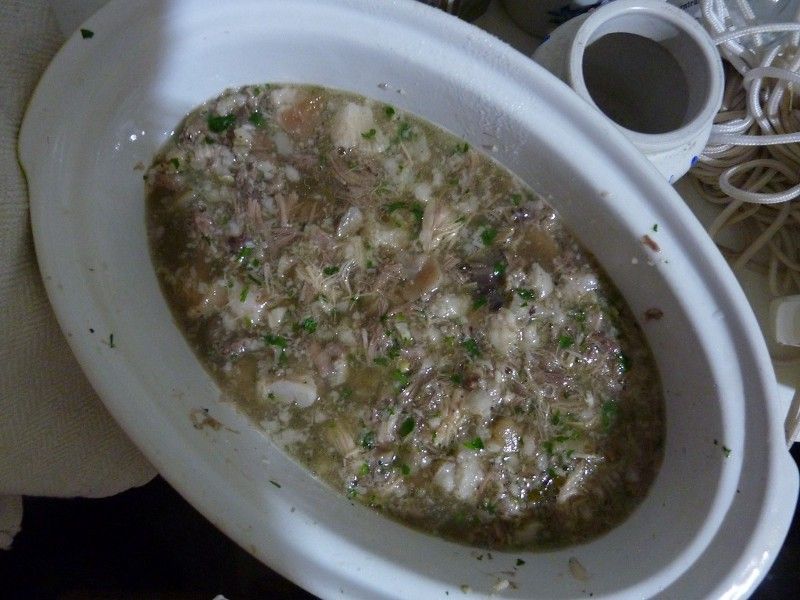
Here’s the finished Brawn the next day…
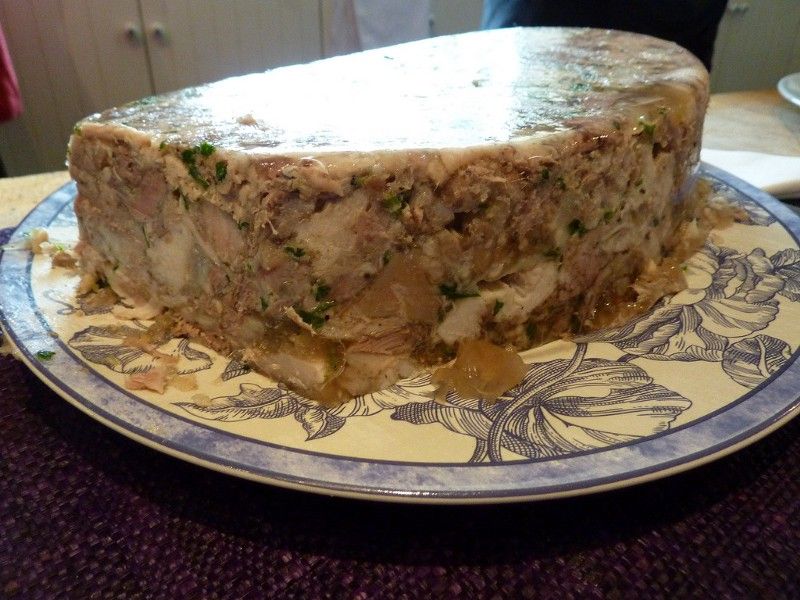
Ham
Next John makes the brine for wet-curing the ham. He pours some homemade cider into a pot, and adds salt and muscovado sugar in the ratio 3:1:1. Juniper berries, black peppercorns and bay leaves are then whizzed up in a blender and added in too.
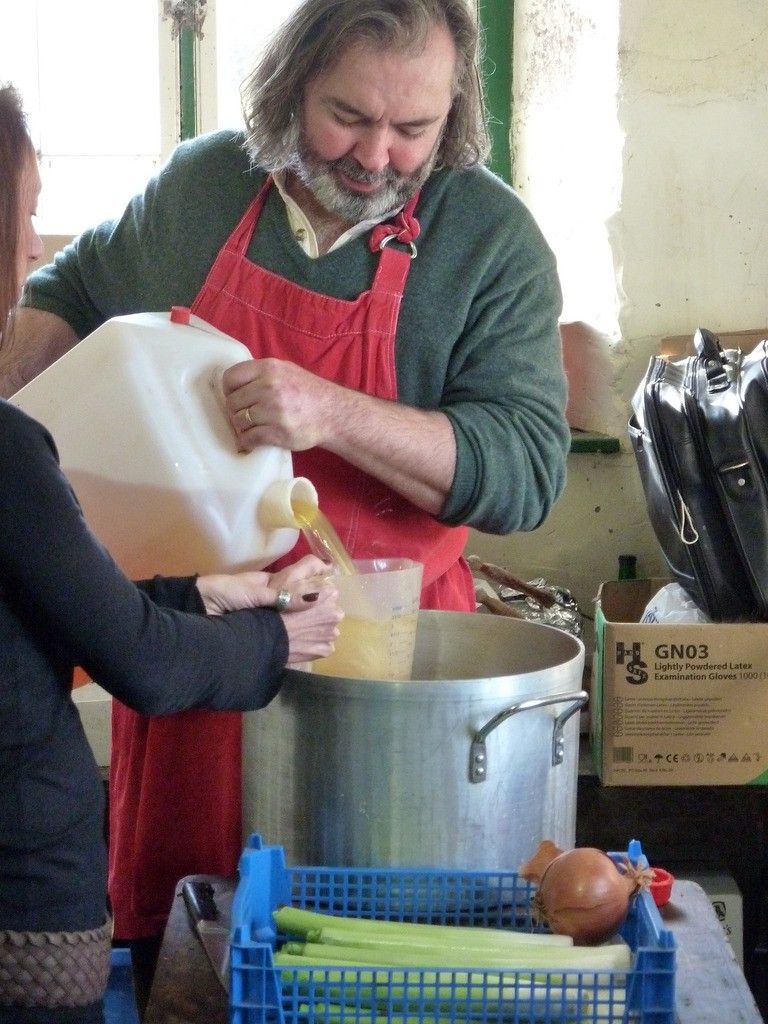
These both then go onto the Rayburn to bubble away.
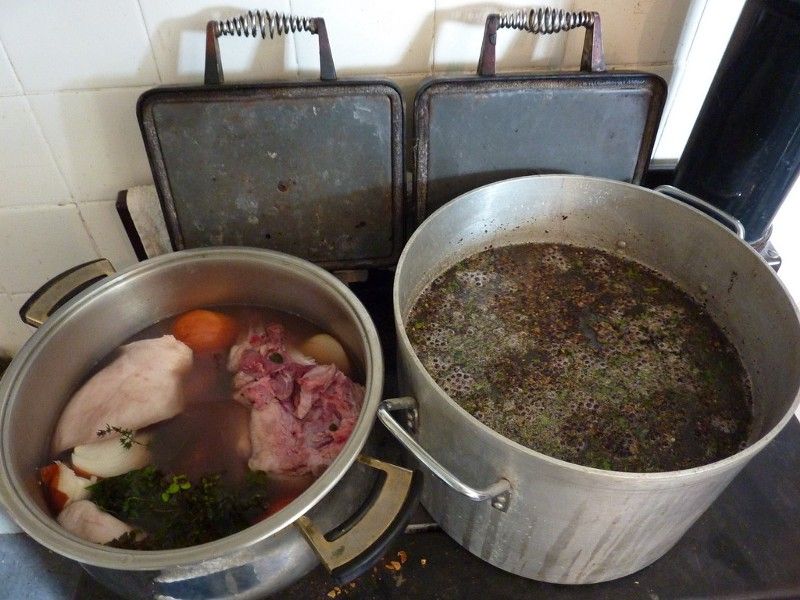
After a while the brine is taken off the heat and allowed to cool, before being poured out in a plastic container over the ham.
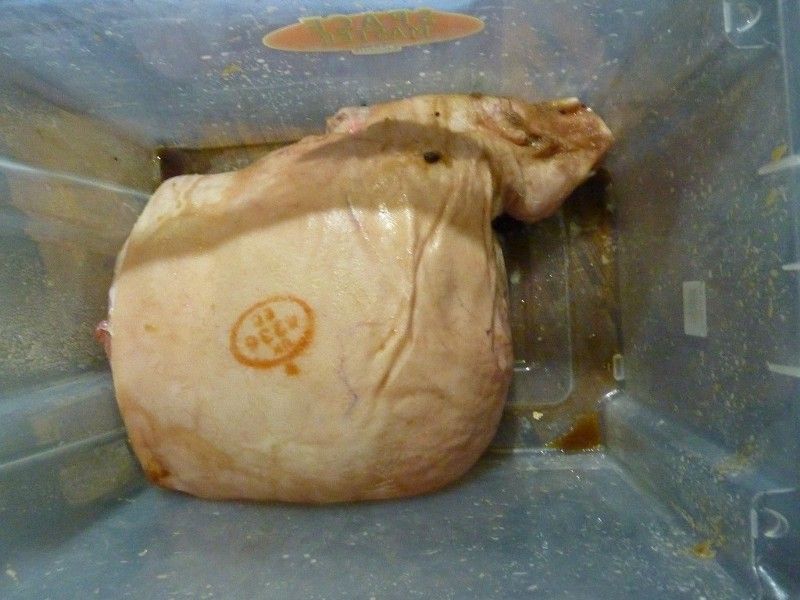
This is then sealed and left in a cool place for 3–4 days per kilo of ham. In this case that’ll be about 5 weeks. It’s no co-incidence that ham made on Martinmas is ready in the week before Christmas.
Bacon
Now it’s time for the serious butchery. Duchy explains that it’s important to cut everything to the square angle, cutting across bones, rather than going with the diagonal of the ribs etc.
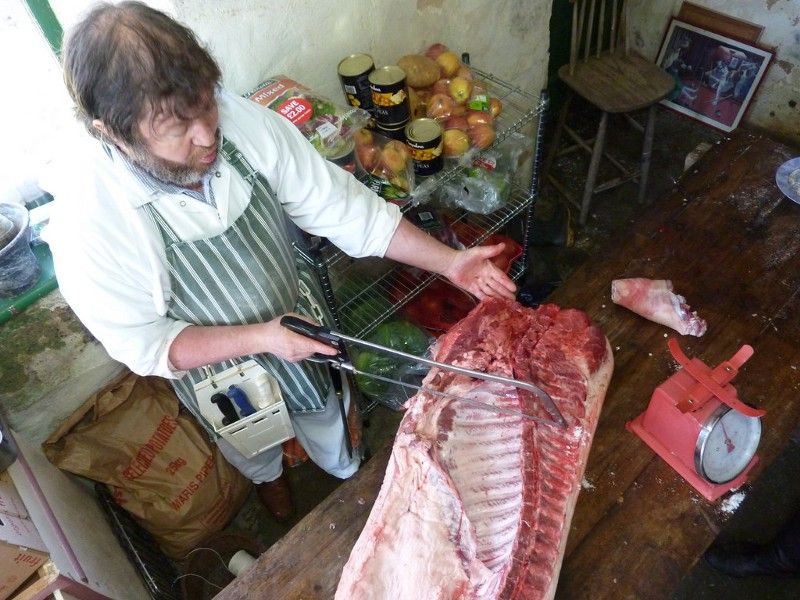
The area above his saw is the shoulder, or ‘hand’. This is cut off, boned and then rolled to become a roasting joint.
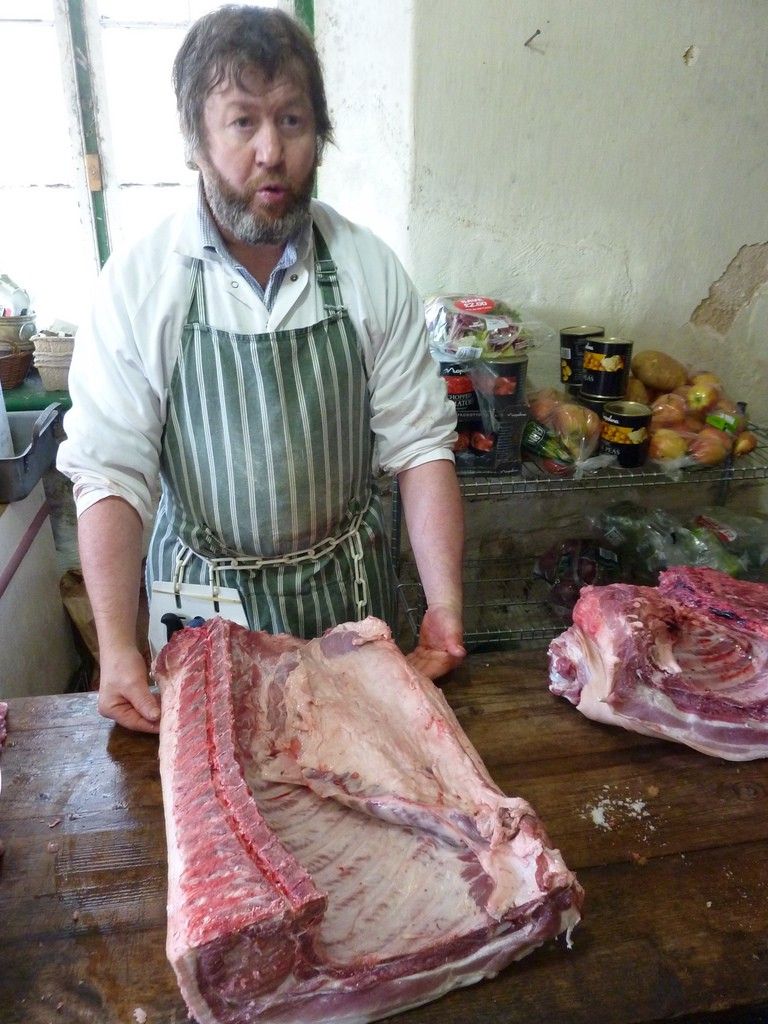
This then leaves the side, which can be cut into pork chops and belly pork, or into bacon cuts.
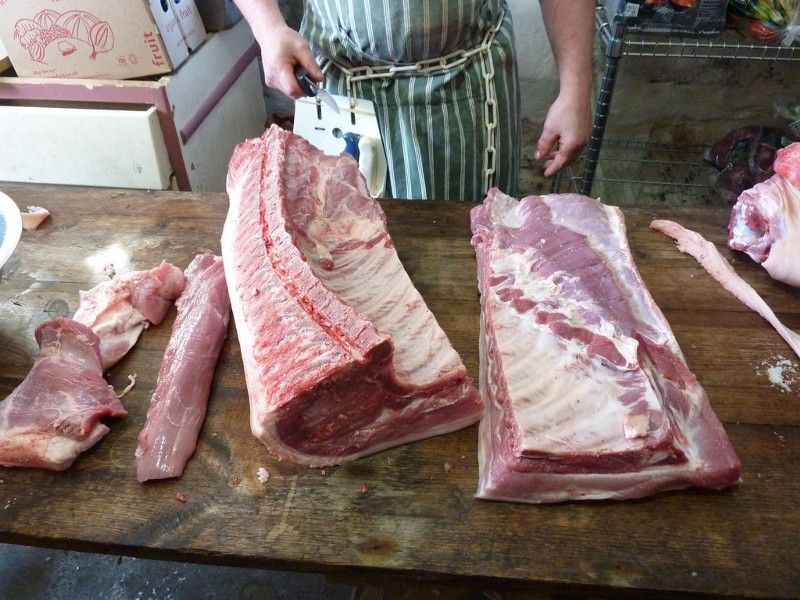
We’re going for the bacon cuts. In the centre of the picture above is the loin, cut for back bacon, and on the right is the belly, which will be streaky bacon in this case. With just a few more cuts these will become recognisably bacon — with the added bonus of giving us some spare ribs:
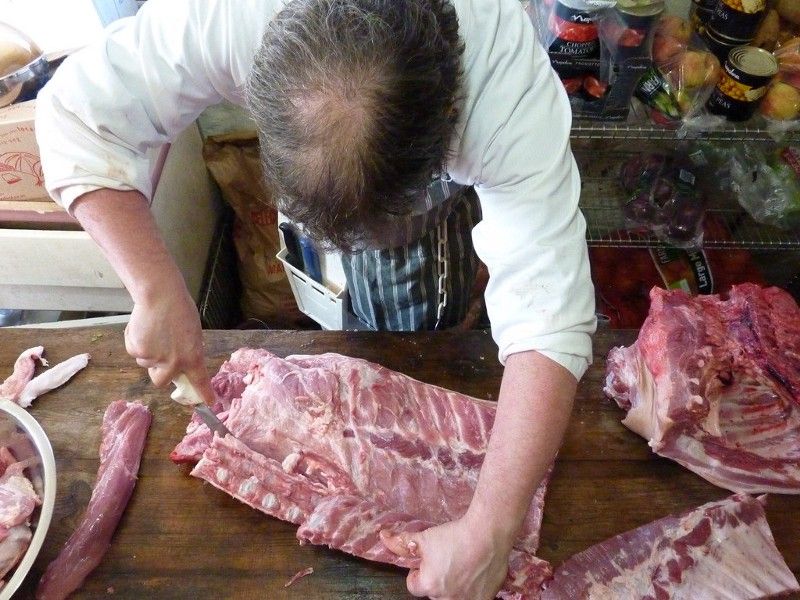
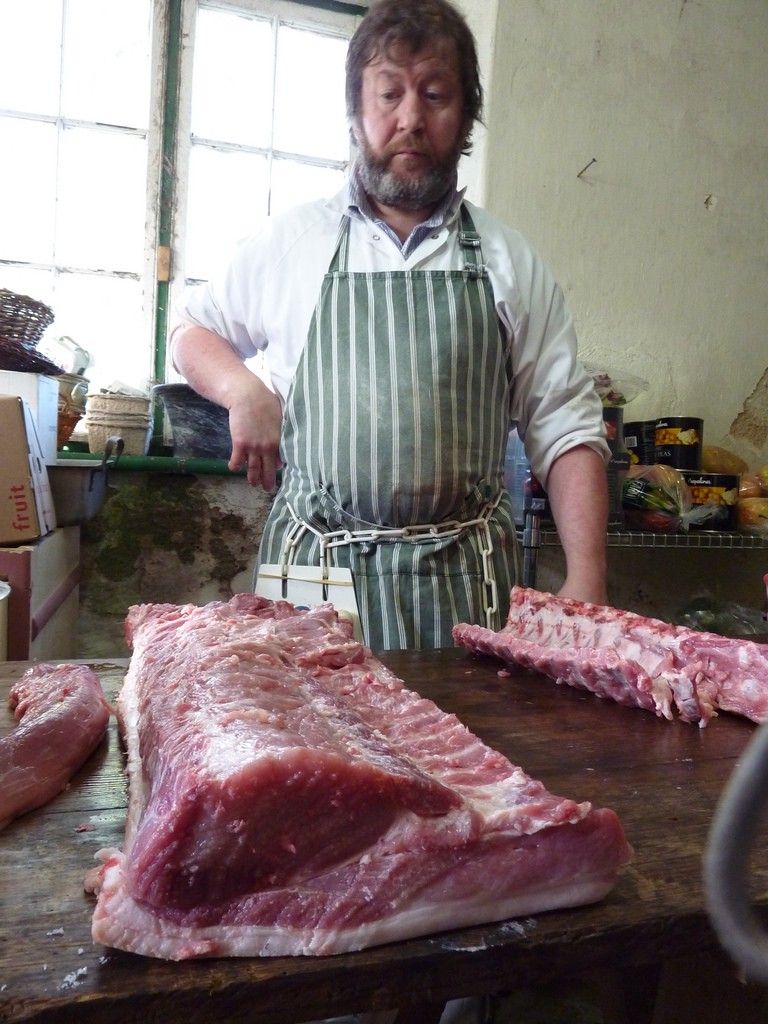
These cuts are then going to be dry cured, simply by rubbing them with a mix of sea salt and muscovado sugar in the ratio 1:1.
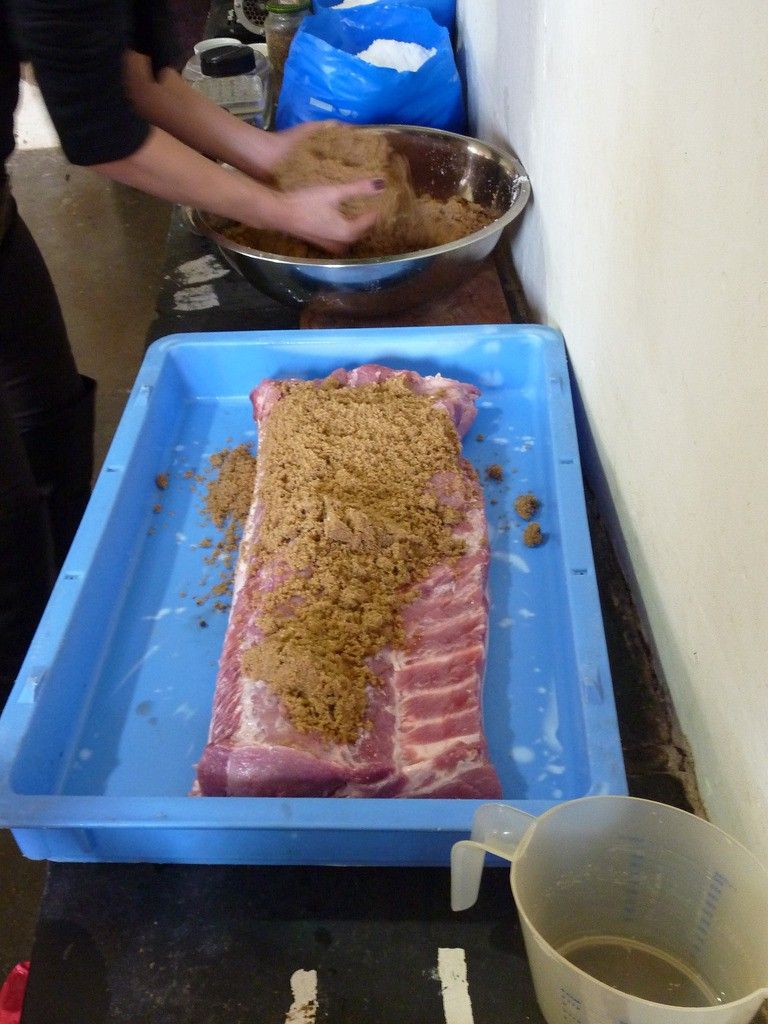
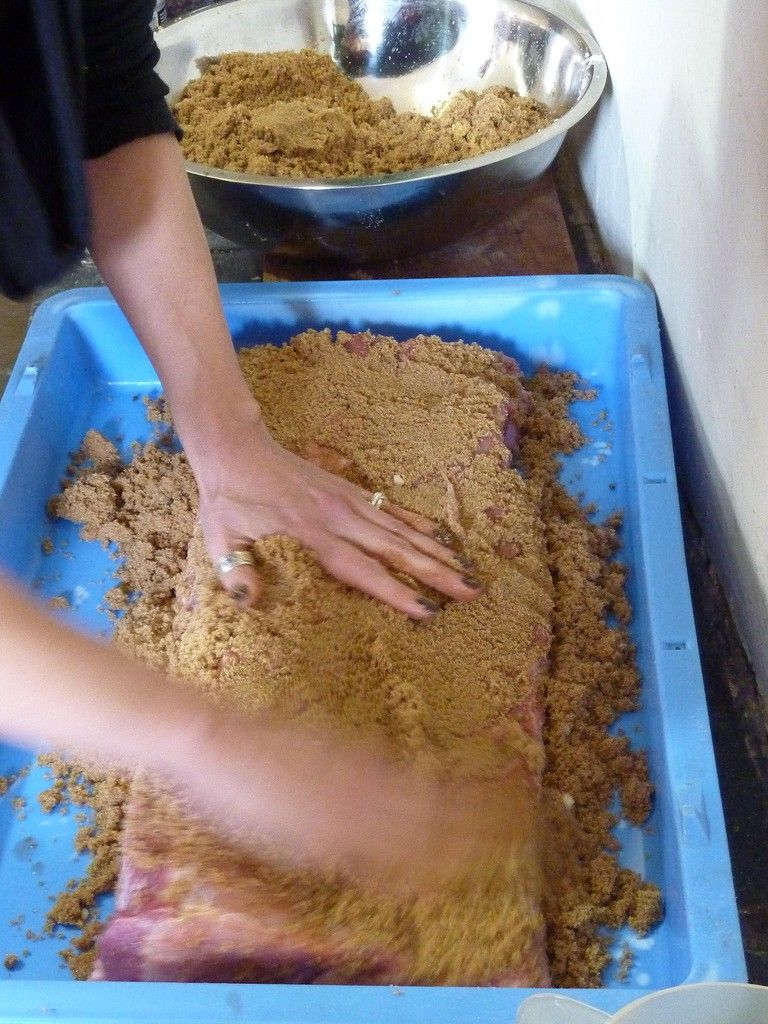
They’re then stacked together. Keep them in a cool dry place. Each day rub the mixture into them. They’ll be ready in a week.
We couldn’t wait that long, and luckily, for breakfast this morning, John had brought along some bacon he’d made before from one of his own pigs:
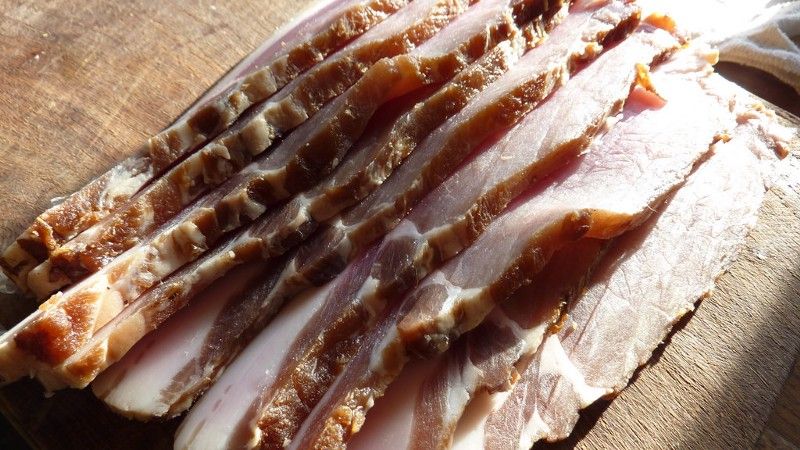
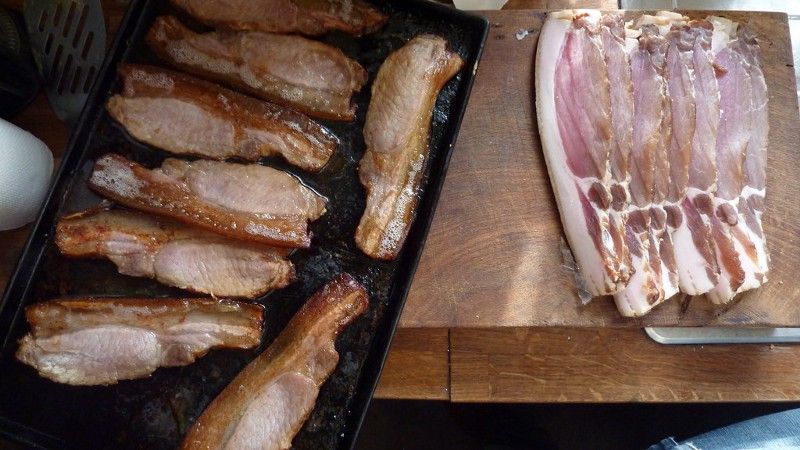
You can cure your own bacon really easily by buying the whole cuts from a good butcher. If you don’t have a cool dry room such as a larder, you can just keep it in the fridge while it cures. Duchy suggests trying the cheaper belly cut for streaky bacon at first (you can buy it from a good butcher for probably around £20 in total), or just a small piece of the loin, before moving onto curing a full loin, as that can be expensive (about £7/kilo probably — so likely to be around £25-£40)
Ribs
Now it was time to turn the ribs into lunch, with a simple barbecue sauce:
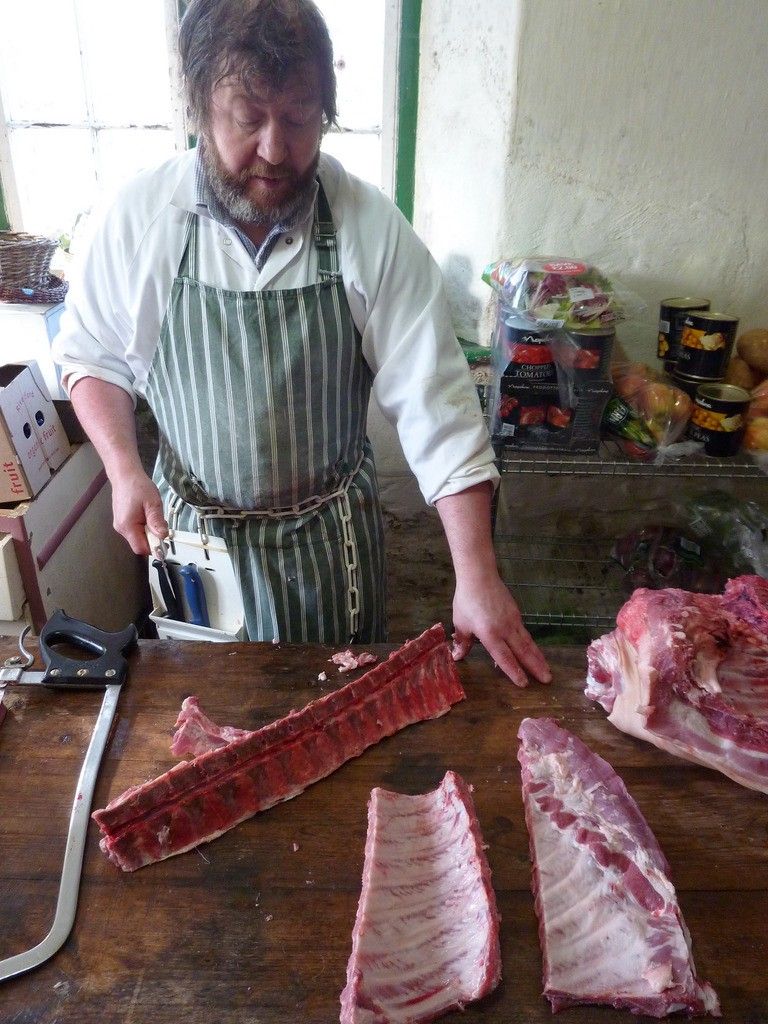
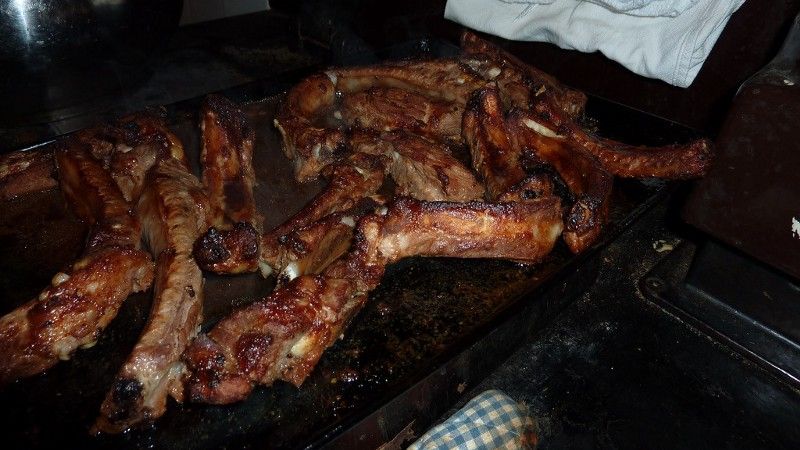
Victoria had also baked some bread which was in great demand for mopping up the sauces.
Sausages
While we were butchering the pig any offcuts (of good meat) were set aside for use in our sausages. Some of the good quality back fat was also set aside for this purpose (the rest will be rendered tomorrow).
This was minced up:
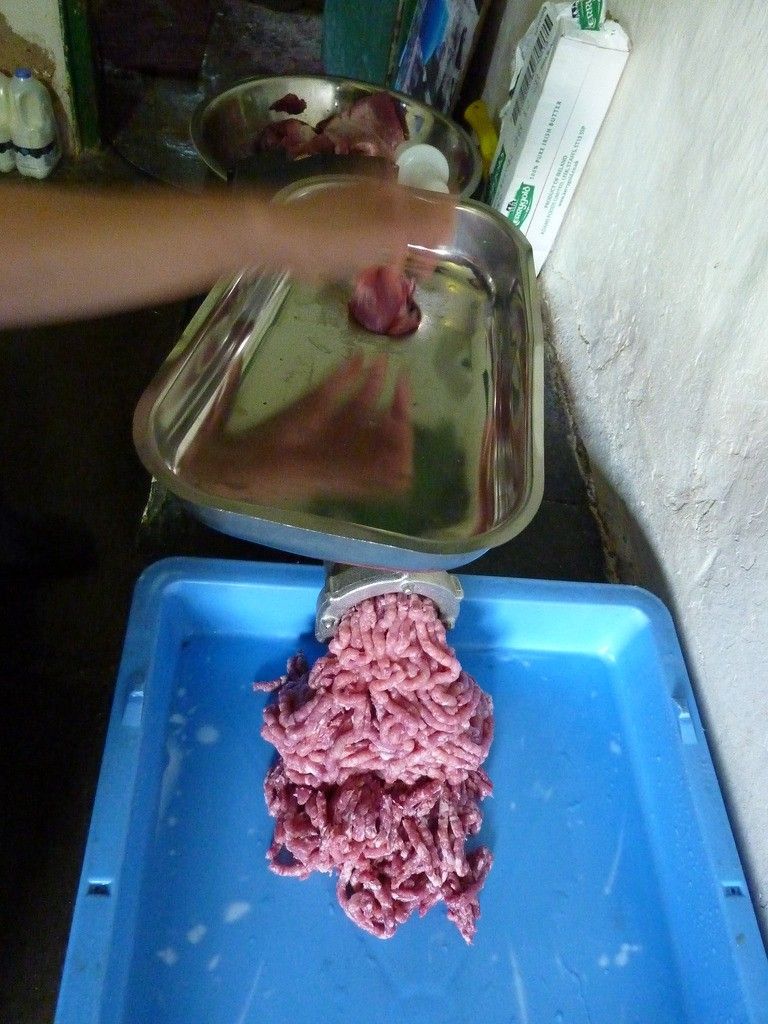
The mince was split into four batches. One was to be turned into salami (which also had 20% back fat included), and was seasoned with fennel seeds, salt (measured as 2% of the weight of the meat and fat), lots of black pepper, and garlic.
The remaining three portions were to become traditional English sausages. One batch was simply seasoned, the other two were mixed with other ingredients (Sage and Onion; Leek).
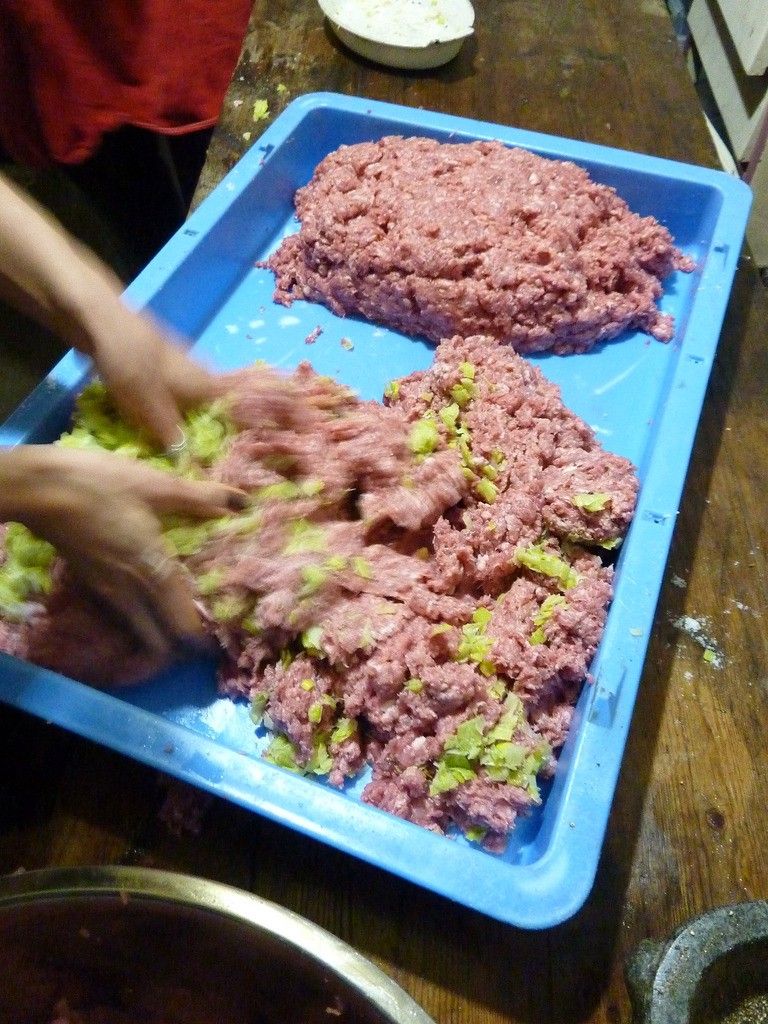
Small patties were fried off so we could taste and check the seasoning. Delicious.
We then washed some natural casings (ordered separately), and fed them onto the nozzle of the sausage filler. For the salami, beef casings were used, with pig casings for the English sausages.
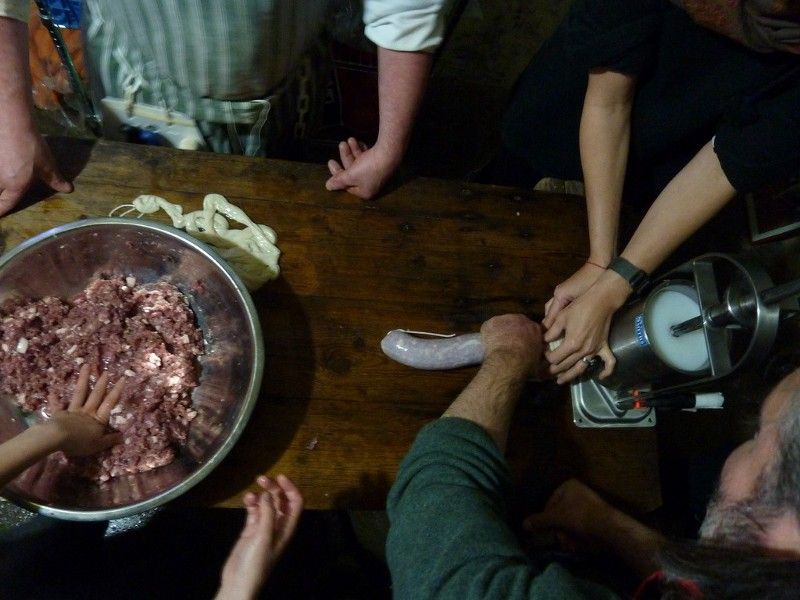
The Salami was filled to be about a foot long, and tied at each end with string.
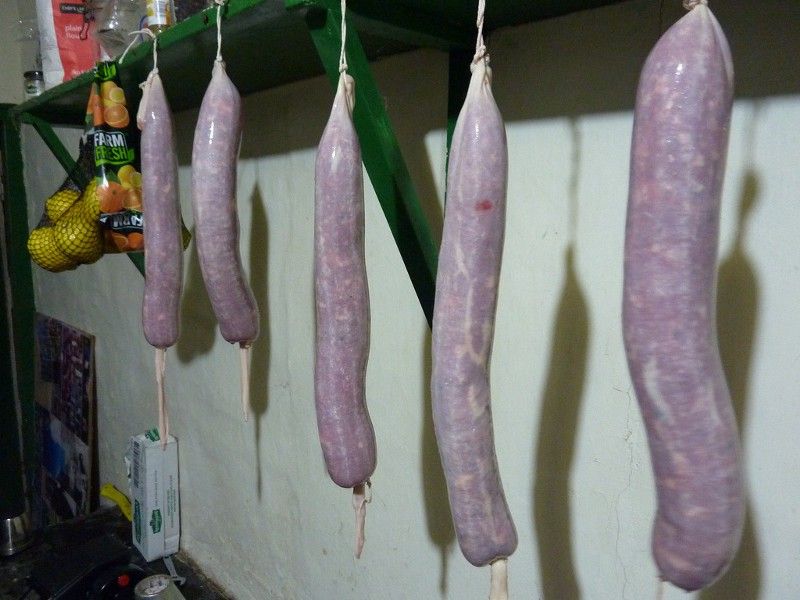
The English sausages were filled for the full length of the casing…
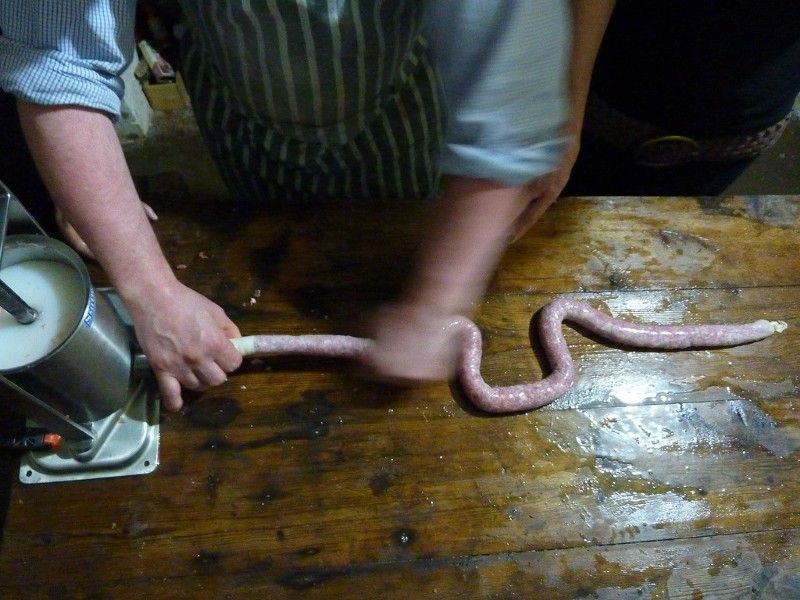
…and then twisted to length in a traditional string of sausages.
here are the sausages the next day…
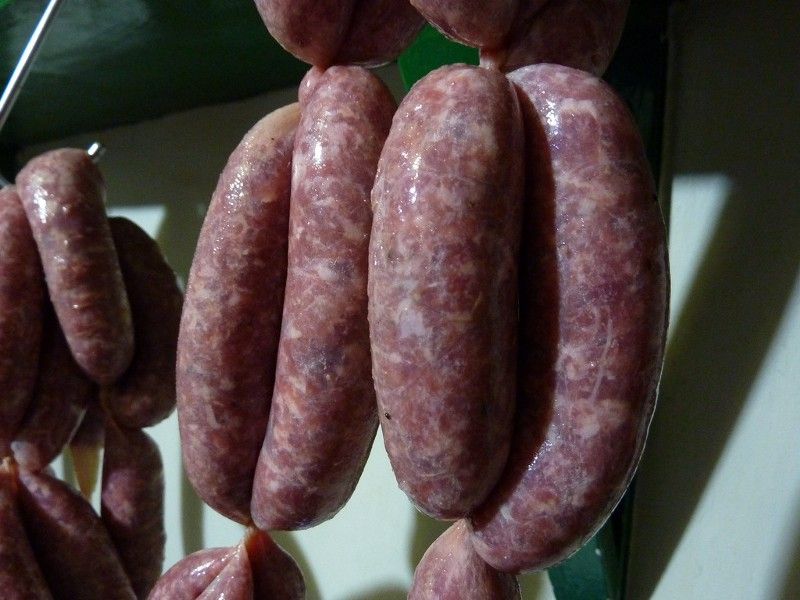
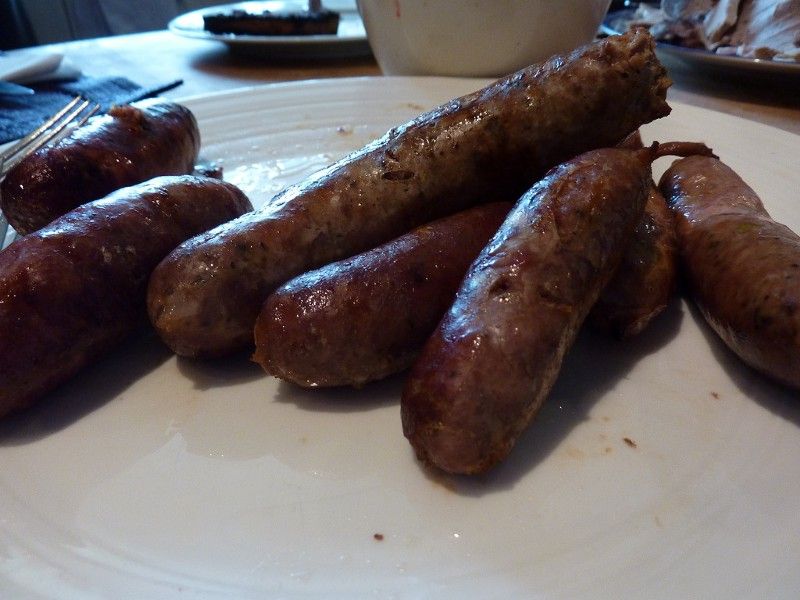
The Result
We started with a whole pig which had cost £157 to buy. What have we finished with?
Well firstly, I’m surprised by how little waste there is. We were left with one small bucket to throw away once the whole pig was processed. This includes the pieces of the head and the trotter that had been used to make the brawn — so even they had had a purpose and weren’t really wasted.
But what’s most impressive is when everything we’ve produced from one pig is lined up:
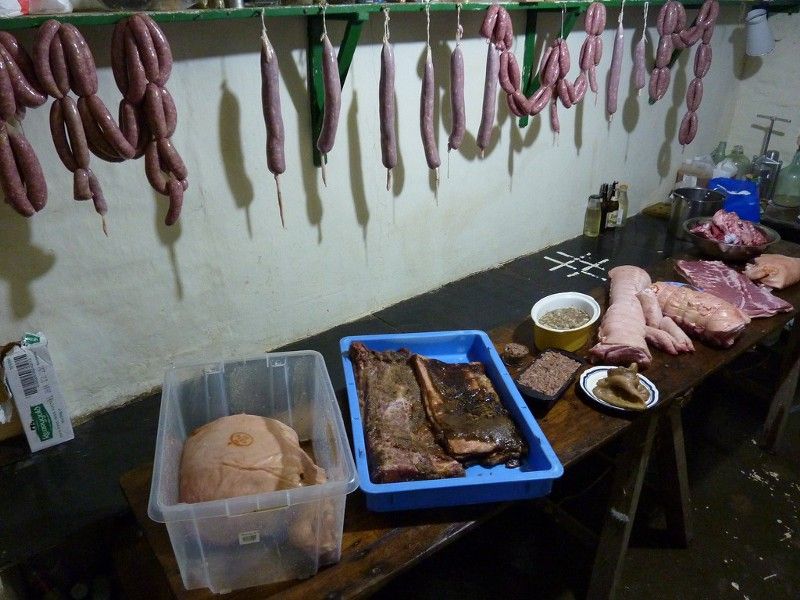
Shown here are:
- A large, 10kg, ham. The brine is being cooled and will be added later.
- Two cuts of bacon — back and streaky.
- Two ears
- Pate
- Brawn
- 2 large rolled roasting joints.
- 3 Trotters (the fourth went into the Brawn)
- 2 Kidneys (to be devilled for breakfast in the morning)
- A pork belly
- Dozens of sausages
- 7 Salami
- Bones for making stock tomorrow
- Fat for rendering tomorrow
Now the work is done, and it’s dark and cold outside, it’s time to head into the warm inviting farmhouse kitchen where a suitable feast for Martinmas is being prepared from the results of our labours.
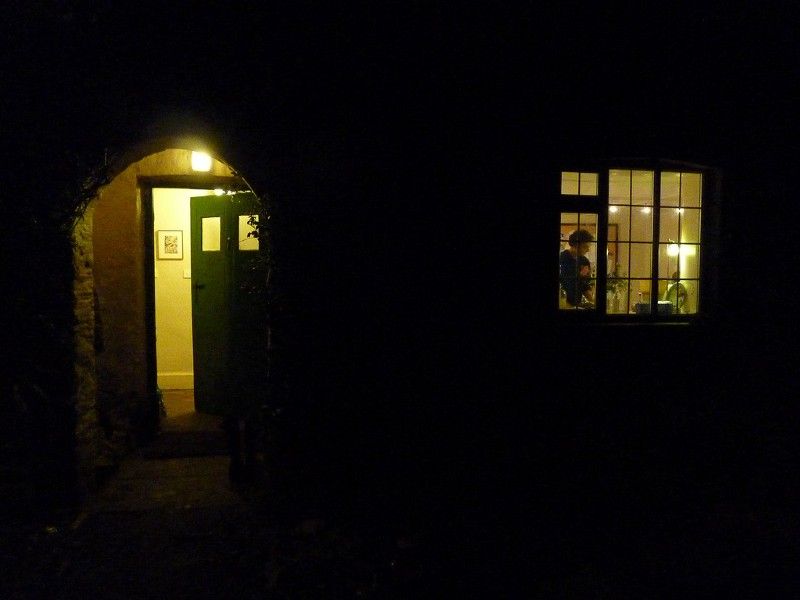
The feast was a cut of pork which had been pot roasted in milk with cinnamon, black pepper, and bay leaves. The meat was moist, tender and full of flavour.
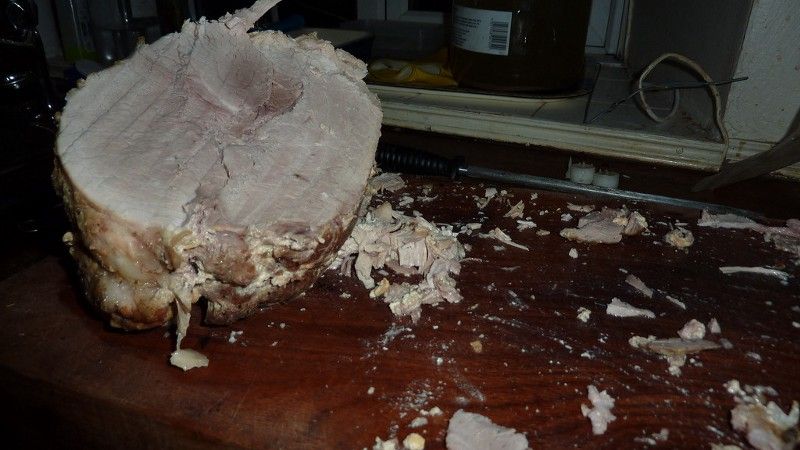
After dinner, Tom provided the entertainment on his ukelele:
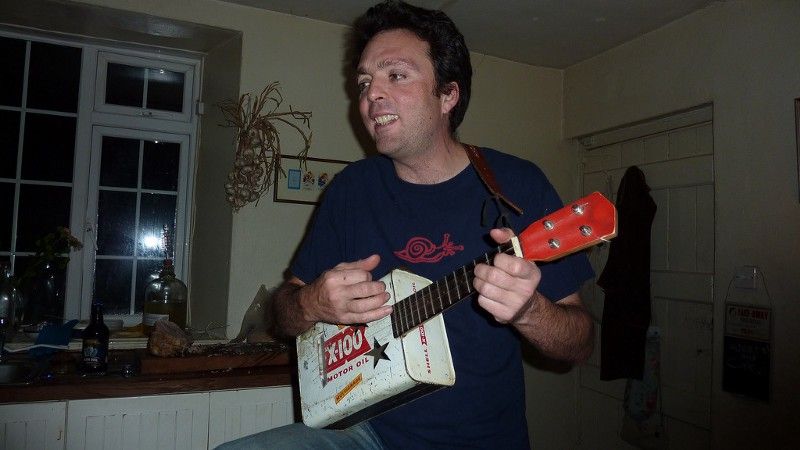
The feasting then turned into dancing and singing along to a Spotify-powered playlist (not a traditional part of the celebration of Martinmas I understand), before we eventually we stumbled to bed around 5am. It was a great night.
Then, just as the hard work of butchery and charcuterie earned us the large dinner, I think the long night of dancing earned us the hearty brunch of sausages, devilled kidneys, brawn and mushrooms (picked on our pre-brunch walk), and generous quantities of bloody mary.
We ate lots — but there was still plenty for everyone to take away, and I’m heading home with a chunk of bacon to finish curing, two rolled cuts for roasting, sausages, and a salami.
But more than that — back in London I’m going to find a good butcher and buy some good quality pork to dry cure my own bacon and a ham, and even make my own sausages when this supply is exhausted.
So we celebrated Martinmas, but we also learned so much along the way.
When this blog was first posted, comments were enabled, and here’s what was posted:
13/11/2011 — Anne Becker
Wow, Steve! Amazing. This really captured the weekend. Thanks for making such a great record of the whole event. The only thing missing is the photo we should have snapped today after lunch–you passed out in the big green chair!
15/11/2011 — Jen
wow steve!!! i was looking for my hand cameo kneading the sausage mince but guess it ended up on the cutting room floor :) and what about the parsnip wine? otherwise an absolutely outstanding memento of the weekend. appreciated your ahem discretion as well re our 5am stumble back. glad there were no pics to commemorate some of those 80’s dance moves!!
PS oh, and just found my hand cameo! sorry, attention to detail is something i need to work on, obviously
27/11/2011 — John Mitchinson
Steve — a splendid blog. Duchy and I are both flattered by your comments and impressed by your attention to detail. We just spent a very happy day yesterday transforing two of my pigs into deliciousness.
Would love to know how the bacon, etc turned out.
Originally published at www.steveparks.co.uk.
Celebrating Martinmas With A Pig Feast
We’re going to mark Martinmas by spending the weekend processing a pig into delicious roasting joints and cured meat.